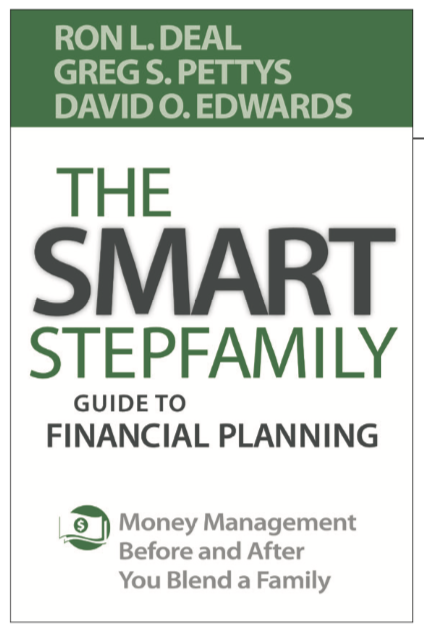Attorney David Edwards recently co-wrote a book with Ron Deal and Greg Pettys. This article is adapted from that book — The Smart Stepfamily Guide to Financial Planning: Money Management Before and After You Blend a Family.
Forming a Togetherness Agreement creates a financial vision for your life which leads to financial success and a flourishing marriage.
Planning to Succeed: Togetherness Agreement vs. A Prenup
In 2016 a home designer in the Netherlands introduced a new concept for a floating prenuptial house. According to an article in Dezeen by Jessica Mairs, the units, designed like two Tetris shapes, “break apart, so unhappily married occupants can cast their spouses adrift.”
We call that planning to fail.
What if you turned that idea upside down and took the two separate, Tetris-like shapes of your financial house and secured them firmly together? Instead of planning to fail, you could carefully orchestrate your financial circumstances into an interlocked design that would merge your lives and financial future.
We call that planning to succeed.
This doesn’t mean throwing caution to the wind and hoping your financial situations works itself out. That wouldn’t be wise.
There is a way, however, to be both proactive and smart without focusing on a negative end to the relationship. Most people try to accomplish this with a prenuptial agreement. But a prenup is designed to take care of yourself if the marriage should fail. What if there was a document that helped you and your spouse succeed financially and relationally?
That’s why we developed a Togetherness Agreement.
A prenuptial agreement is done to your spouse when you want to protect yourself in the event of a divorce. A Togetherness Agreement is done for your spouse. When a TA is created with your spouse, both persons make promises on behalf of the other and lay a positive foundation for their life together.
The Togetherness Agreement
A Togetherness Agreement (TA) is a detailed financial vision of your life together. Essentially, it involves putting everything on the financial table — your assets, debts, dreams, and obligations — and deciding how you can meet your needs and facilitate the permanency of your marriage.
The specific stipulations included in the document vary by couple because it is tailored to your specific blended family. Your TA might include general agreements about handling finances as well as plans regarding the financial support, rights, roles, responsibilities, and overall well-being of spouses, children, stepchildren, grandchildren, step-grandchildren, and other significant relationships. It’s not just about money; it’s a plan for how money will help care for your family over time.
Once drafted, a TA serves as a valuable document for your financial planner, if you have one. They’ll be able to keep a keen eye on your entire life plan and over time help everyone involved efficiently implement your well-designed plan. This will help give you confidence that all of your blended family goals will be carried out.
Getting Started
Ideally, a Togetherness Agreement is something you work out before you enter marriage. But there’s no rule that says that’s the only time for it. It’s never too late to sit down and talk openly and honestly about your financial strengths, weaknesses, and questions.
If you think a TA would help your marriage, discus the option with your partner in terms of the net result you are striving for — trust and greater security for both of you. Agree that your goal in this contract is not to plan for divorce, but to address and clarify in advance what might become emotionally charged issues for your blended family down the road, reaffirming your commitment to the permanency of your marriage and providing for your children.
Consult a Guide
Our book The Smart Stepfamily Guide to Financial Planning will help you discern the practical aspects of your TA and how money issues intersect with the relational dynamics of your home (it’s important you consider them together). But in deciding which strategies work best for their specific situation, some couples will also want to meet with a personal guide, a financial planner, or estate attorney.
Negative Reactions
If the idea of a Togetherness Agreement brings up a strong negative reaction in your partner, or in you, there are two responses you might consider.
First, ask your financial planner if there are other ways to address some of your biggest financial questions and goals. Clarifying your desires in a trust or other estate document may help, as will agreeing in a less formal way how day-to-day expenses and savings will be handled.
Second, recognize that a strong reaction here may be an indicator of a deeper fear in your partner or in you. Recognize the fear and articulate it. Put aside conversations about the details of your money matters, and as a couple talk about your past experiences and what’s driving strong emotional reactions now. Then you can return to making financial plans.
Ultimately, long-range financial success requires investments in both your family relationships and your portfolio.
For more information, visit Blended Family Finances where you can download David’s free resource “10 Tips to Get Started: Avoid Money Drama and Plan for Your Future.”
This post has been adapted from The Smart Stepfamily Guide to Financial Planning: Money Management Before and After You Blend a Family (2019) by Ron L. Deal, Greg S. Pettys, & David O. Edwards, Bethany House Publishers, a division of Baker Publishing Group. Used with permission. All rights to this material are reserved.

